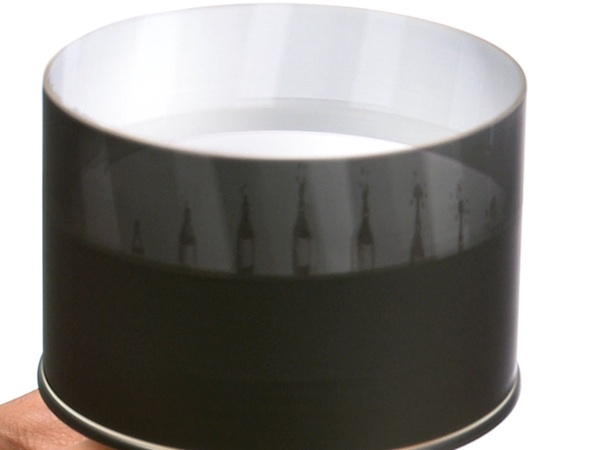American Flag Optical Illusion
At first, your eyes are working just fine and the image your brain produces for you is correct even though you may wonder a little […]

Vision and the way our brains perceive what we are seeing are incredible. Just think of optical illusions, 3D images, the fact that your eyes are processing the world around you upside-down! A fun trick to play on your eyes and brain uses a zoetrope. This fantastic tool is able to change multiple still images, into a moving animation that would make Walt Disney jealous.

Use a ruler to measure 3″ from the bottom of the circular cardboard container. Place marks along the outside of the container as a cutting guide. As an aid, wrap electrical tape around the container along the 3″ markings you created.
Use a utility knife to cut the container along the tape guideline.
Download zoetrope template here and print it out on legal size paper. Using a pair of scissors, carefully cut it out.
Wrap the template around the container, near the open end, and create marks on the container that align with the template’s black lines.

Remove the template and lengthen the lines to around 1″. Cut the lines so that they are about 1/16th of an inch wide. Error on the narrower side.

Push a plastic thumbtack (the kind that stick out) through the bottom of the can. Try to make sure the tack is centered.
Use a small piece of electrical tape, inside the container, to hold the tack in place.
Try spinning the apparatus using the tack. If you’re able to give the container a decent spin, you’ve done well!

Wrap the zoetrope template into the inside of the container.
Look through the slits that you’ve cut and into the container. You should be able to make out one or two of the images inside.
Spin the apparatus using the tack and gaze inside. The geyser zoetrope comes to life!
A zoetrope is a device that creates animation through the illusion of motion from static pictures. You see that the images you place in the zoetrope are motionless, still images. However, when the zoetrope is spun, the images create an erupting geyser. Normally, images being spun in this fashion would simply blur together. However, because of the slits cut into the container, our eyes only observe brief instances of the images through the slits. As the instances fly by in rapid succession, our brains perceive the images as motion.